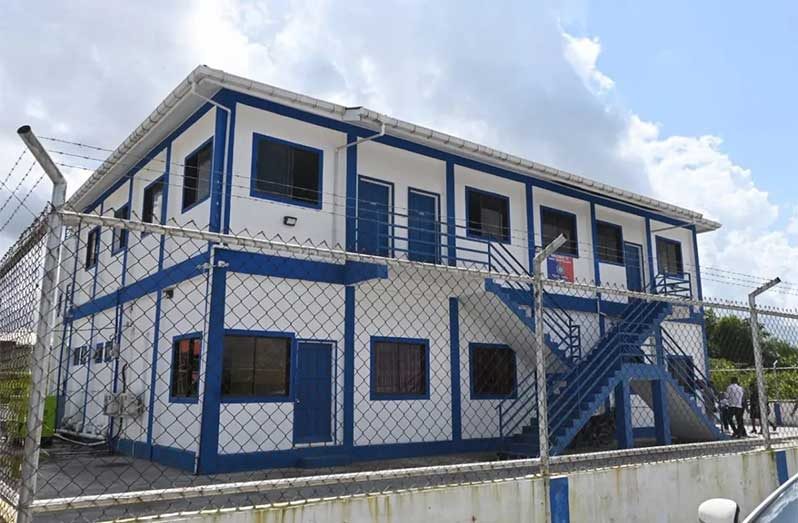IN a landmark move to bolster public safety and community development, the Government of Guyana recently unveiled four state-of-the-art police facilities in Regional Division 4B, setting new standards for policing and social outreach.
These include the new Regional Division 4B Headquarters, the Providence and Herstelling/Farm Police Stations, and the Diamond Police Training Facility, together representing a comprehensive investment in policing, social services, and community empowerment.
MODERN FACILITIES TO ENHANCE SAFETY AND OPERATIONAL EFFICIENCY
The flagship of the day’s activities is the Diamond Divisional Headquarters, a purpose-built command centre constructed for G$195.8 million.
Equipped with advanced operational features, including holding cells, interview and ID parade rooms, a witness room, and dedicated offices for the Criminal Investigation Department (CID) and Traffic Division, the facility is designed to improve coordination and response times across the region and beyond.
Specialised spaces such as a child-friendly interview room and a domestic violence support and waiting areas underscore the Ministry’s commitment to creating safer, more inclusive environments that prioritise the protection of vulnerable populations.
Administrative areas include offices for the Divisional Commander and Deputy Commander, the Court Superintendent’s office, a conference room to facilitate inter-agency collaboration, and an IT and Command Operations Room to enable intelligence-led policing and real-time decision-making.
The Providence Police Station, rebuilt for G$65.2 million, now features male, female, and juvenile lockups, witness and ID parade rooms, child-friendly areas, and a domestic violence interview and waiting area.
It also houses an armoury, evidence room, and offices for CID, Traffic, and general enquiries, alongside new living quarters that promote officer welfare and ensure round-the-clock security coverage.
The newly-constructed Herstelling/Farm Police Station expended at a cost of G$82.47 million, meets national standards and addresses the critical need for increased police visibility along the East Bank corridor, a rapidly developing area previously reliant on support from neighbouring jurisdictions.
COMMUNITY EMPOWERMENT THROUGH SKILLS TRAINING
The Diamond Police Training Facility, built at a cost of GYD $98.5 million, expands access to essential community development programmes. Offering courses in computer literacy, sewing, home economics, and other vocational skills, the facility aims to increase employability, reduce recidivism, and promote long-term social reintegration, particularly among youth and at-risk groups.
COMMUNITY OUTREACH AND ROAD SAFETY
As part of the commissioning events, Minister of Home Affairs Honourable Robeson Benn and Permanent Secretary Andre Ally also distributed protective helmets and sports equipment to Commander DeHearte and his team. The helmet distribution is part of the Ministry’s broader national campaign to enhance road safety and encourage responsible behaviour among motorcyclists.
Permanent Secretary Mr. Andre Ally stressed the personal responsibility involved in road safety:
“If you love someone, make sure they wear a helmet. Better yet, if they don’t absolutely need to ride, encourage them to avoid it altogether. The risks are just too high.” PS Ally added, “Every one of us has a responsibility, not just to enforce road safety, but to influence our friends, families, and communities. Speak up when you see reckless riding or poor road habits.”
A Vision for a New Policing Culture.
Minister Benn concluded with a forward-looking vision for the Guyana Police Force:
“We need a new kind of policing, grounded in empathy, discipline, and restraint. Don’t respond with the first impulse. Be professional. Be understanding. These new facilities must be matched by a new culture in the Guyana Police Force. Infrastructure alone doesn’t change lives, people do.”
The commissioning of these stations and training facilities demonstrates the Government of Guyana’s comprehensive approach to public safety, balancing modern enforcement capabilities with education, rehabilitation, and community engagement to build safer, stronger, and more inclusive neighbourhoods. (MoHA)



.jpg)









